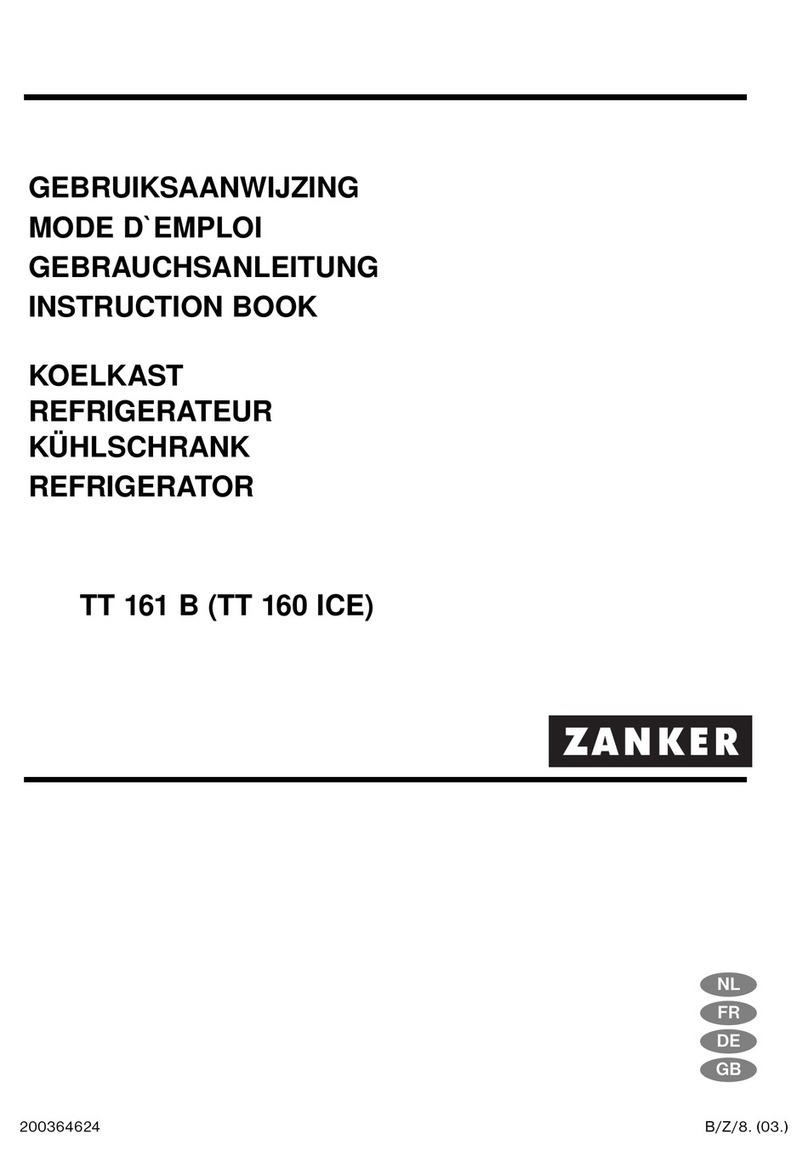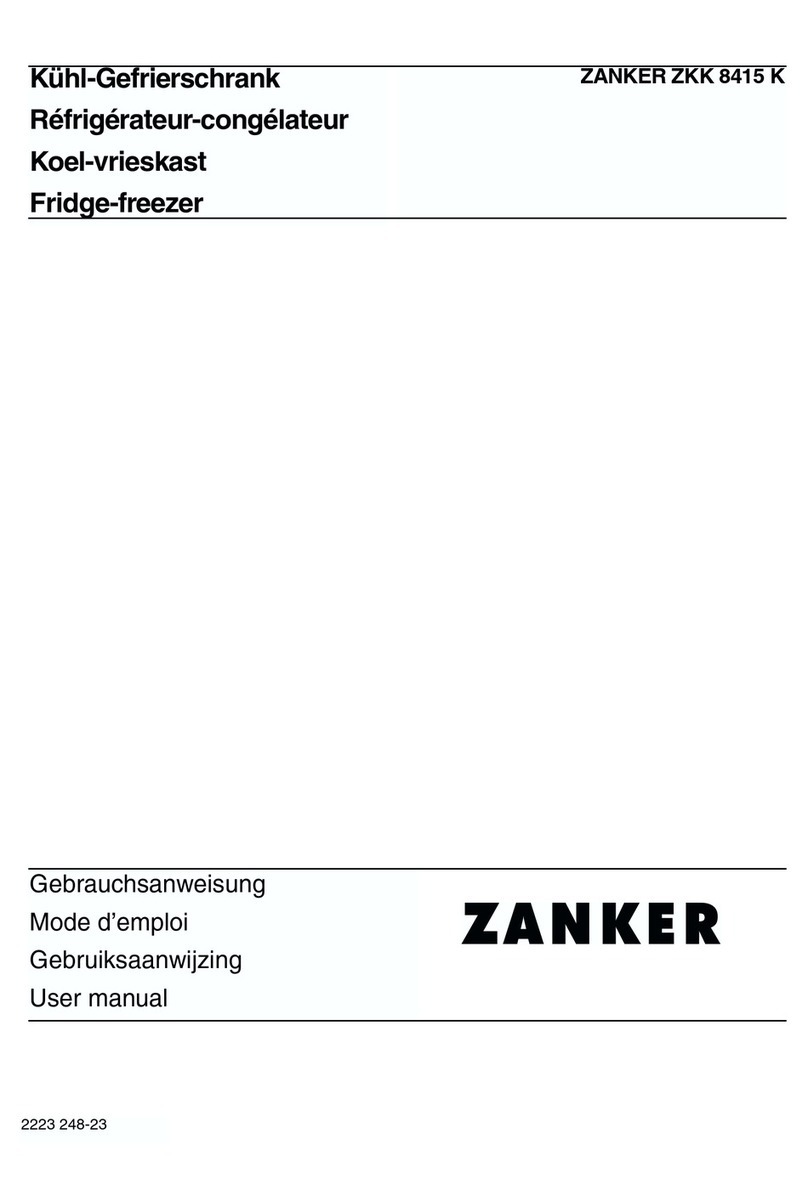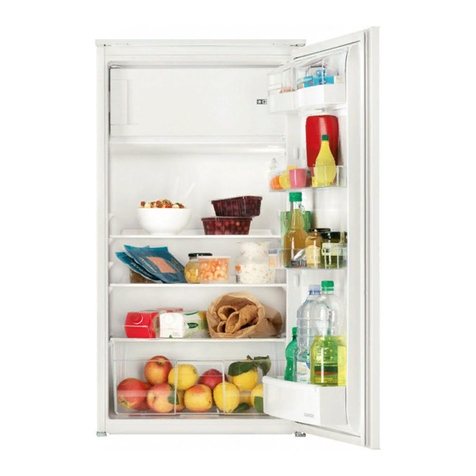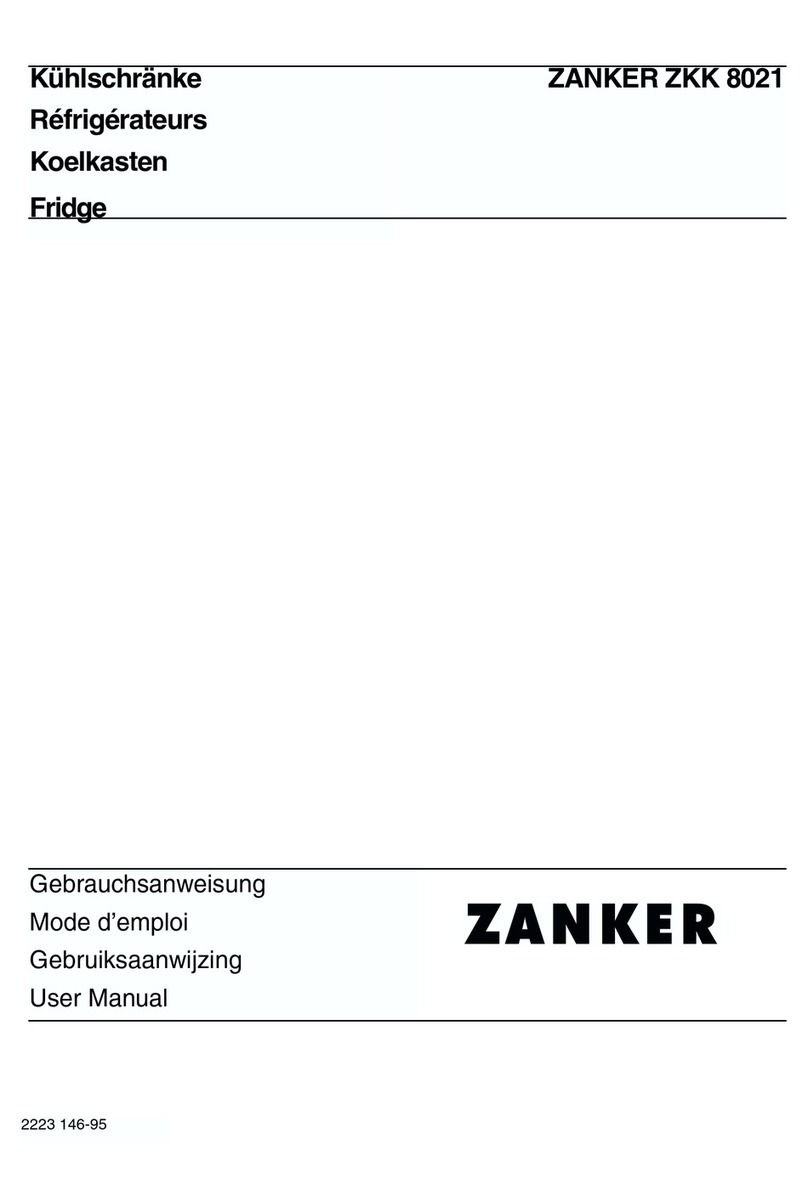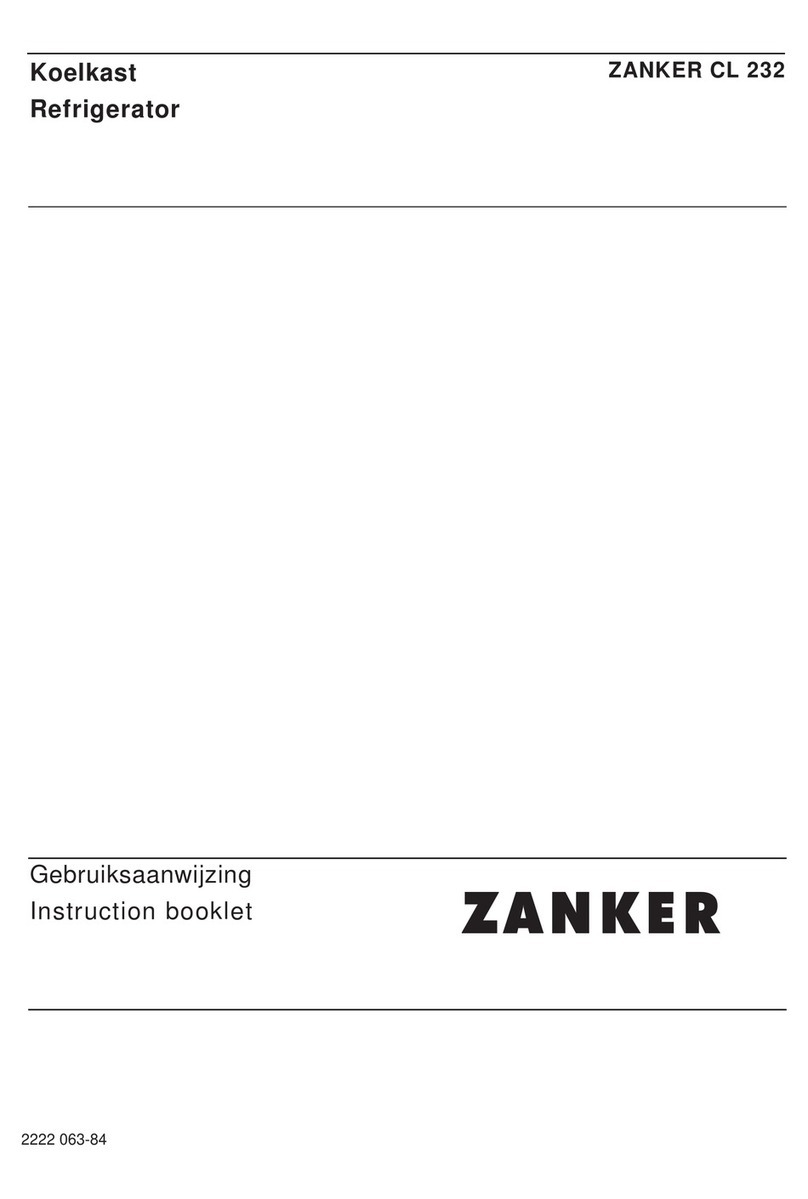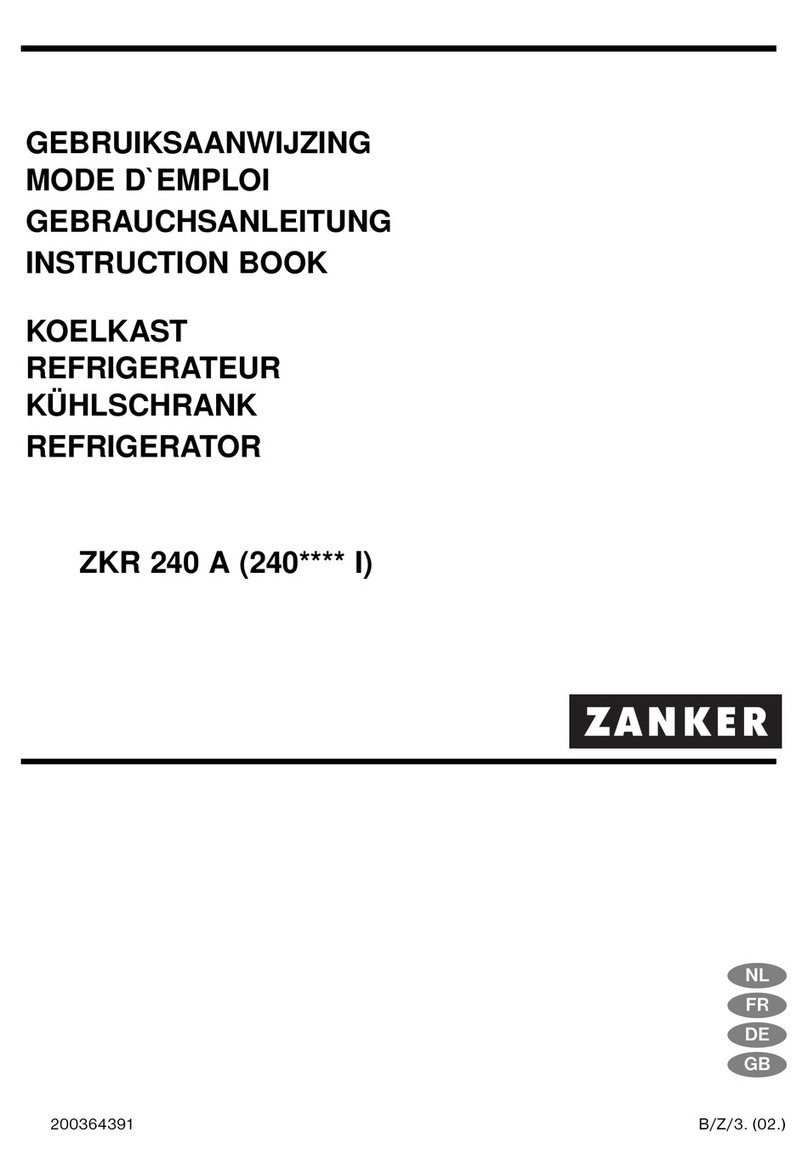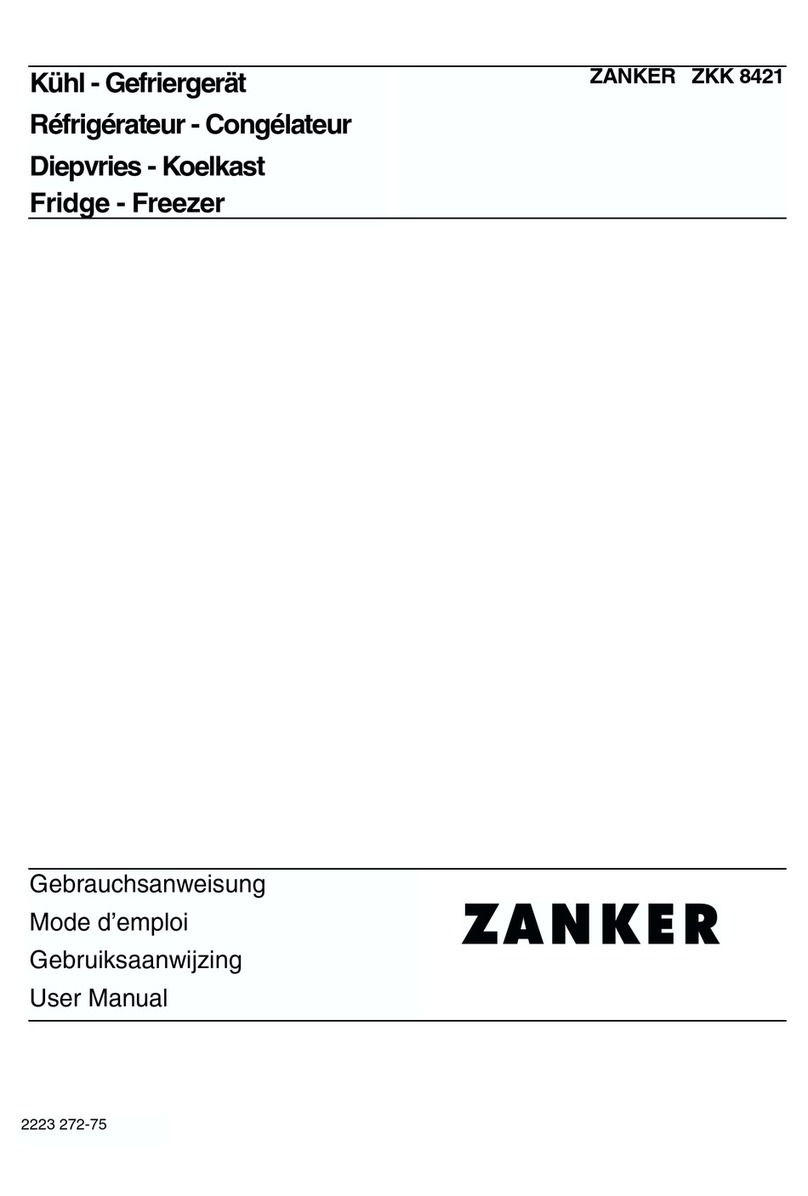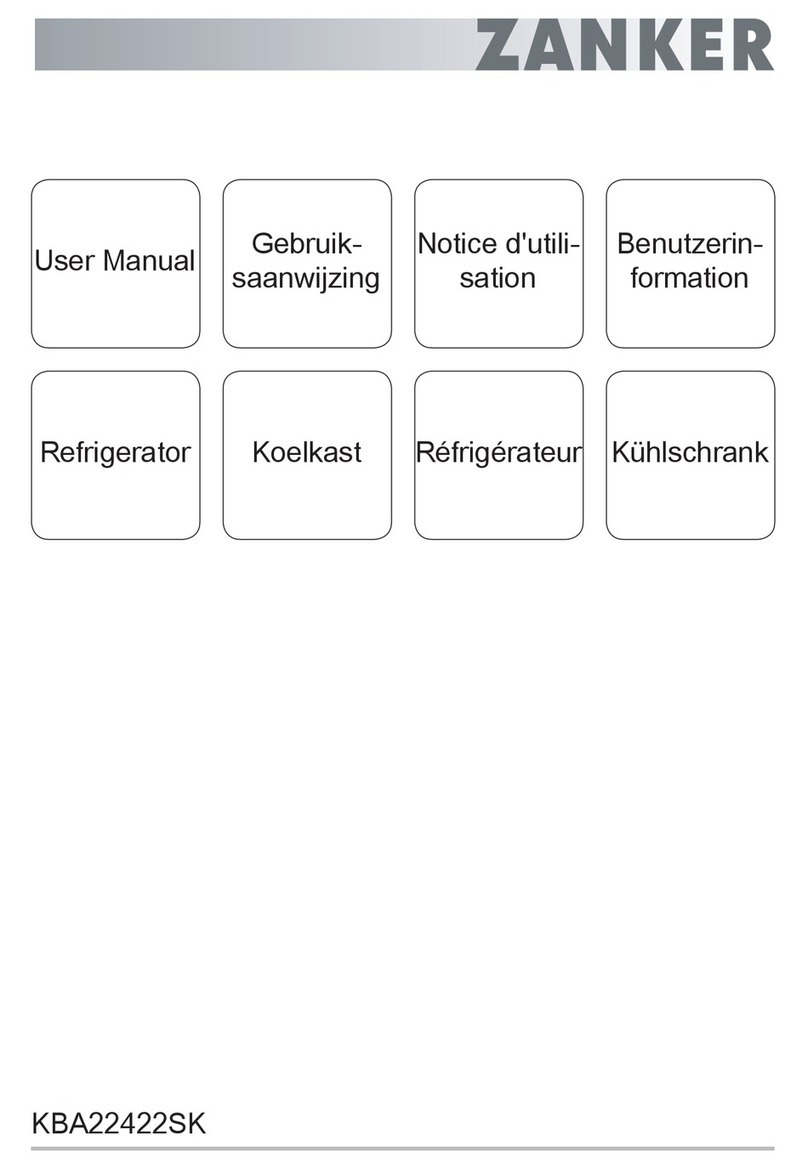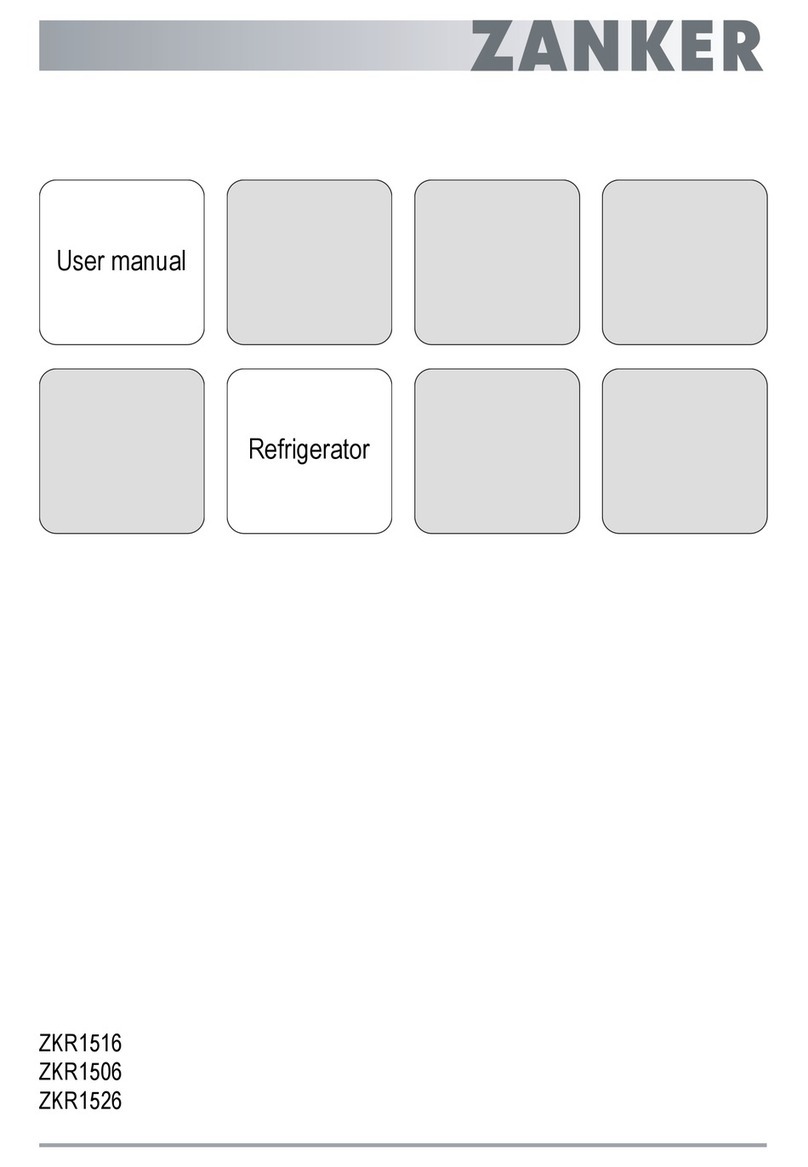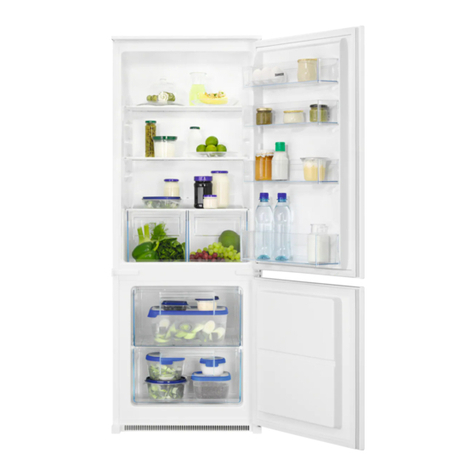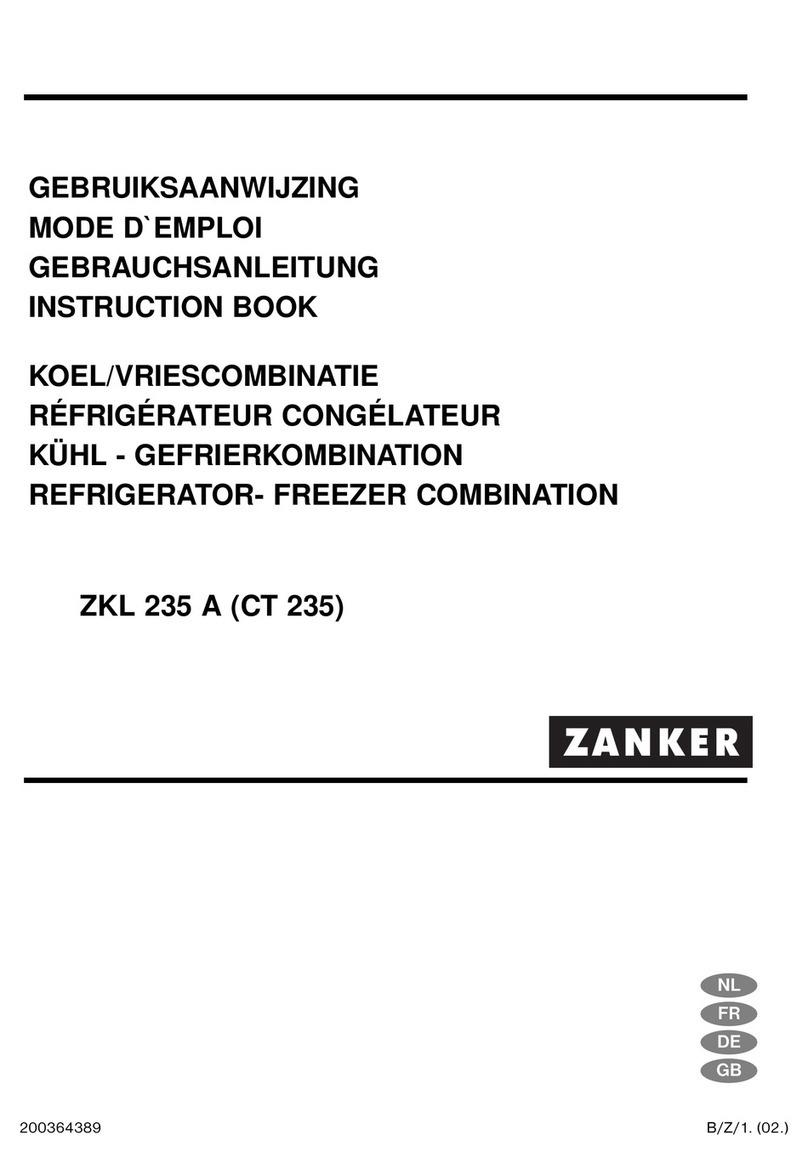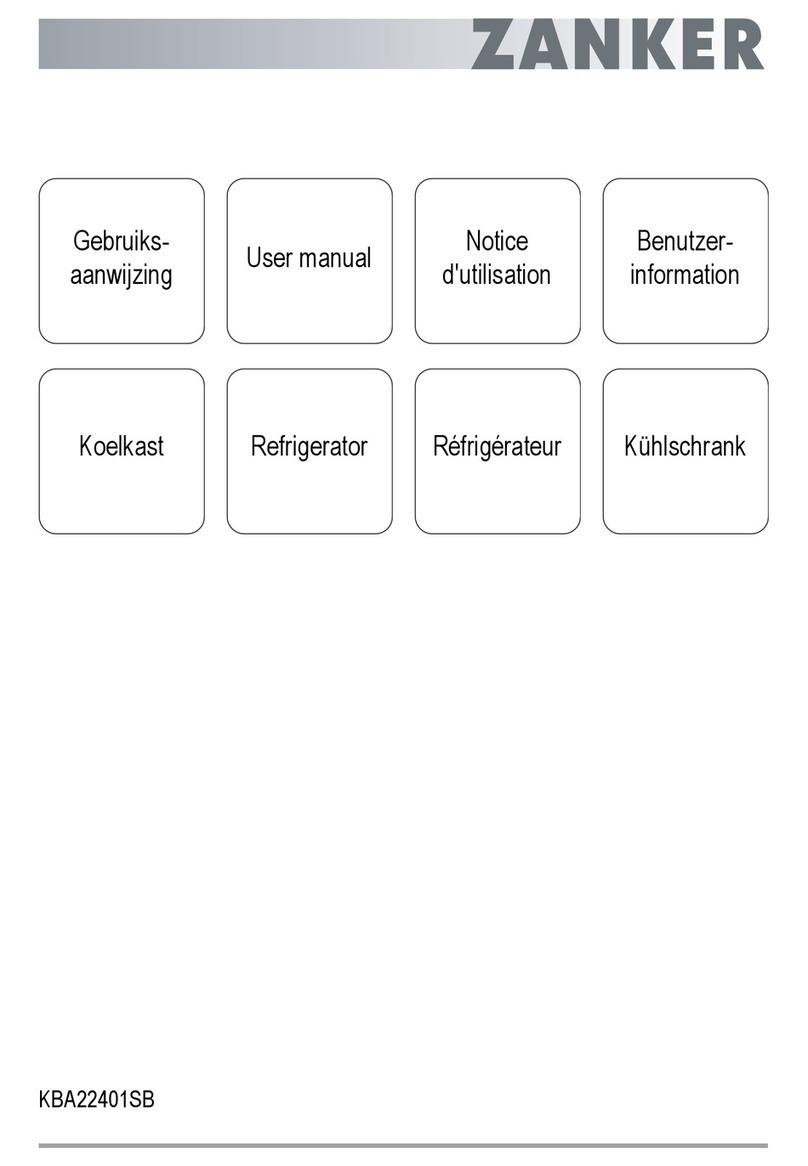•Gebruik geen elektrische apparaten in de koelkast, tenzij deze door de
fabrikant worden aanbevolen.
•Gebruik geen waterstralen of stoom om het apparaat te reinigen.
•Maak het apparaat schoon met een vochtige, zachte doek. Gebruik alleen
neutrale schoonmaakmiddelen. Gebruik geen schuurmiddelen,
schuursponsjes, oplosmiddelen of metalen voorwerpen.
•Bewaar geen explosieve substanties zoals spuitbussen met drijfgas in dit
apparaat.
•Als de voedingskabel beschadigd is, moet de fabrikant, een erkende
serviceverlener of een gekwalificeerd persoon deze vervangen teneinde
gevaarlijke situaties te voorkomen.
Veiligheidsvoorschriften
Montage
WAARSCHUWING! Alleen een erkende
installatietechnicus mag het apparaat
installeren.
• Verwijder alle verpakkingsmaterialen.
• Installeer en gebruik geen beschadigd apparaat.
• Volg de installatie-instructies op die zijn
meegeleverd met het apparaat.
• Wees voorzichtig met het verplaatsen van het
apparaat, het is zwaar. Draag altijd
veiligheidshandschoenen.
• Zorg ervoor dat rond het apparaat lucht kan
circuleren.
• Wacht ten minste 4 uur alvorens het apparaat aan
de netstroom aan te sluiten. Hierdoor kan de olie
terug in de compressor stromen.
• Installeer het apparaat niet in de nabijheid van
radiators, fornuizen, ovens of kookplaten.
• De achterzijde van het apparaat moet tegen de
muur worden geplaatst.
• Installeer het apparaat niet op een plaats met direct
zonlicht.
• Gebruik dit apparaat niet in gebieden die te vochtig
of te koud zijn, zoals bijgebouwen, garages of
kelders.
• Til de voorkant van het apparaat op als u hem wilt
verplaatsen, om krassen op de vloer te voorkomen.
Aansluiting op het elektriciteitsnet
WAARSCHUWING! Gevaar voor brand
en elektrische schokken.
• Dit apparaat moet worden aangesloten op een
geaard stopcontact.
• Controleer of de elektrische informatie op het
typeplaatje overeenkomt met de stroomvoorziening.
Zo niet, neem dan contact op met een
elektromonteur.
• Gebruik altijd een correct geïnstalleerd,
schokbestendig stopcontact.
• Gebruik geen meerwegstekkers en verlengsnoeren.
• Zorg dat u de elektrische onderdelen (hoofdstekker,
kabel, compressor) niet beschadigt. Neem contact
met de erkende servicedienst of een elektricien om
de elektrische onderdelen te wijzigen.
• De stroomkabel moet lager blijven dan het niveau
van de stopcontact.
• Steek de stekker pas in het stopcontact als de
installatie is voltooid. Zorg ervoor dat het netsnoer
na installatie bereikbaar is.
• Trek niet aan het netsnoer om het apparaat los te
koppelen. Trek altijd aan de stekker.
Gebruik
WAARSCHUWING! Gevaar op letsel,
brandwonden of elektrische schokken.
• De specificatie van het apparaat mag niet worden
veranderd.
• Plaats geen elektrische apparaten (bijv.
ijsmachines) in het apparaat tenzij uitdrukkelijk
geschikt verklaard door de fabrikant.
• Zorg ervoor dat u het koelcircuit niet beschadigt. Het
bevat isobutaan (R600a), aardgas met een hoge
ecologische compatibiliteit. Dit gas is ontvlambaar.
• Als er schade aan het koelcircuit optreedt, zorg er
dan voor dat er zich geen vlammen en andere
ontstekingsbronnen in de kamer bevinden. Ventileer
de kamer goed.
3
